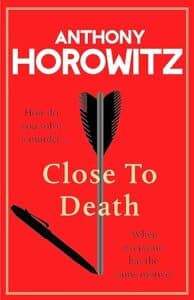
I love Anthony Horowitz. His writing and his mysteries just work for me, and every adult book he writes is a must-read. (I confess, I don’t love his series for kids, Alex Rider.) I adored Magpie Murders, both the book and the miniseries, and I love the Hawthorne and Horowitz books. It’s fun seeing an author write himself into a series as somewhat of a clueless dolt. (When Horowitz asks Hawthorne to tell him the solution to an old murder case, Hawthorne replies, “You never know the solution, mate. That’s what makes your writing so special. You don’t have a clue.” Ha! (p. 65 of the ARC))
This book is pretty different from the previous Hawthorne and Horowitz books. In the previous books, the author has watched Hawthorne solve a mystery and then written a book about it. In this book, he writes about a murder that happened years before. So, unfortunately, the pair don’t spend much time together this time around. Still, I get it – the author needs to keep things fresh for himself and his audience.
I often don’t even try to solve murder mysteries, but Horowitz throws in so many details and so much misdirection and then makes the clues pay off, so I do try to pay attention. (No, I did not figure out what was going on in Close to Death, any more than the fictional Horowitz did.) I also enjoy how English these books are.
“I have never been a huge fan of so-called ‘locked-room’ mysteries,” complains the fictional Horowitz as the real-life Horowitz proceeds to write one. Ha! (p. 184 of the ARC) I had a bit of a hard time with this one in one respect, trying to figure out how he could actually turn this into a published book given what would need to be revealed, but that’s beside the point. I know they aren’t true crime, but clever fiction. And I know these books aren’t done because we still need to find out what happened in Reeth!
I read an advance reader copy of Close to Death from Netgalley. It is scheduled to be released on April 16 and will be available in multiple formats at the Galesburg Public Library. The library owns the whole series in multiple formats. If you want to read the first four books, start with The Word is Murder.


 Welcome to Cooking the Books (where we try recipes found in, well, books!) This month, Children’s Assistant & STEM Specialist Ms. Meghan tried out a recipe from one of her recent reads:
Welcome to Cooking the Books (where we try recipes found in, well, books!) This month, Children’s Assistant & STEM Specialist Ms. Meghan tried out a recipe from one of her recent reads: From the publisher: For fans of Knives Out and The Thursday Murder Club, an enormously fun mystery about a woman who spends her entire life trying to prevent her foretold murder only to be proven right sixty years later, when she is found dead in her sprawling country estate…. Now it’s up to her great-niece to catch the killer.
From the publisher: For fans of Knives Out and The Thursday Murder Club, an enormously fun mystery about a woman who spends her entire life trying to prevent her foretold murder only to be proven right sixty years later, when she is found dead in her sprawling country estate…. Now it’s up to her great-niece to catch the killer. From the publisher: A retired San Diego police detective embarks upon group walking tours in England’s most scenic counties in the first in a charming new mystery series set in the English countryside.
From the publisher: A retired San Diego police detective embarks upon group walking tours in England’s most scenic counties in the first in a charming new mystery series set in the English countryside. From the publisher: In the latest installment of the acclaimed Tuscan Mystery series, the sole witness at a crime scene speaks only English, and ex-NYPD detective turned amateur chef Nico Doyle is summoned by the local carabinieri to help.
From the publisher: In the latest installment of the acclaimed Tuscan Mystery series, the sole witness at a crime scene speaks only English, and ex-NYPD detective turned amateur chef Nico Doyle is summoned by the local carabinieri to help.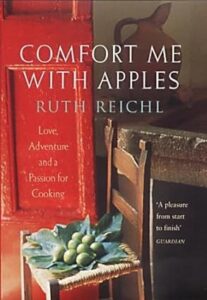 Welcome to Cooking the Books (where we try recipes found in, well, books!)
Welcome to Cooking the Books (where we try recipes found in, well, books!)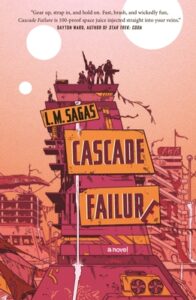 From the publisher: A high-octane, sci-fi adventure featuring a fierce, messy, chaotic space family, vibrant worlds, and an exploration of the many ways to be—and not to be—human.
From the publisher: A high-octane, sci-fi adventure featuring a fierce, messy, chaotic space family, vibrant worlds, and an exploration of the many ways to be—and not to be—human. We are excited to introduce innovative spaces within the newly constructed Galesburg Public Library. Among them is the Skills Lab, which promises to redefine how the library engages with the community. This project is made possible through the visionary backing of the 100 Extraordinary Women© Campaign, creating a dynamic learning space that transcends traditional boundaries.
We are excited to introduce innovative spaces within the newly constructed Galesburg Public Library. Among them is the Skills Lab, which promises to redefine how the library engages with the community. This project is made possible through the visionary backing of the 100 Extraordinary Women© Campaign, creating a dynamic learning space that transcends traditional boundaries. Transportation: Empowering patrons with basic vehicle maintenance, bicycle repair, and other transportation-related skills.
Transportation: Empowering patrons with basic vehicle maintenance, bicycle repair, and other transportation-related skills.
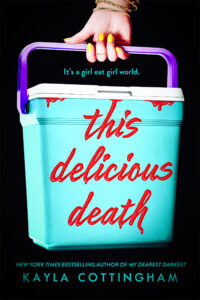 This Delicious Death by Kayla Cottingham, audio version narrated by Sophie Amoss
This Delicious Death by Kayla Cottingham, audio version narrated by Sophie Amoss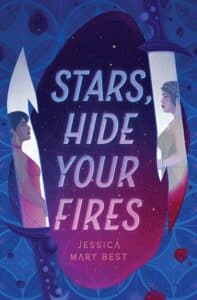 Stars, Hide Your Fires by Jessica Mary Best, audio version narrated by Natalie Naudus
Stars, Hide Your Fires by Jessica Mary Best, audio version narrated by Natalie Naudus